#682 Nature as superorganism
The Hidden Life of Trees: The Illustrated Edition
by Peter Wohlleben, translated by Jill Billinghurst, with a foreword by Tim Flannery
Vancouver: Greystone Books/ David Suzuki Institute, 2018
$45.00 / 9781771643481
Reviewed by Loys Maingon
*
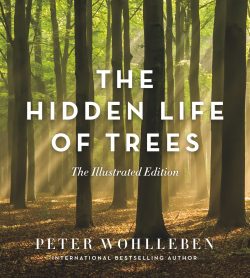 At the dawn of the twentieth century, the Scottish-American naturalist John Muir prophetically summarized modern man’s dysfunctional relation to trees and forests: “The wrongs done to trees, wrongs of every sort, are done in the darkness of ignorance and unbelief, for when the light comes, the heart of the people is always right.”[1] The Hidden Life of Trees is a much-needed portal of light, one that BC’s Minister of Forests should read attentively, as the last of Vancouver Island’s old-growth forests are currently being extirpated in apparent total ignorance.[2]
At the dawn of the twentieth century, the Scottish-American naturalist John Muir prophetically summarized modern man’s dysfunctional relation to trees and forests: “The wrongs done to trees, wrongs of every sort, are done in the darkness of ignorance and unbelief, for when the light comes, the heart of the people is always right.”[1] The Hidden Life of Trees is a much-needed portal of light, one that BC’s Minister of Forests should read attentively, as the last of Vancouver Island’s old-growth forests are currently being extirpated in apparent total ignorance.[2]
Wohlleben’s Hidden Life of Trees comes at a particular moment in time when we face the twin Scylla and Charybdis of a climate emergency and a biodiversity emergency that challenge the future of civilization and humankind’s survival on this planet. In that respect, it is an important introduction to the burgeoning field of plant behaviourism, which saw its empirical beginnings on the West Coast in 1983 with Dr. David Rhoades’ accidental discovery that plants communicate at distance through the release of “airborne pheromonal substances” to signal insect attacks, alter phloem chemistry, and produce insect repellant compounds.[3] This was followed up by a number of studies through the 1990s by biochemists such as Dr. Stefano Mancuso[4] in Italy, who mentored Dr. Monica Gagliano, who is now a leader in this field.[5] In 2000, research took a quantum leap in the work of Dr. Suzanne Simard, now at UBC, mapping plant subterranean communication networks via the mycorrhizal web of fungi that line the forest floor, which became known as “the wood-wide web.”
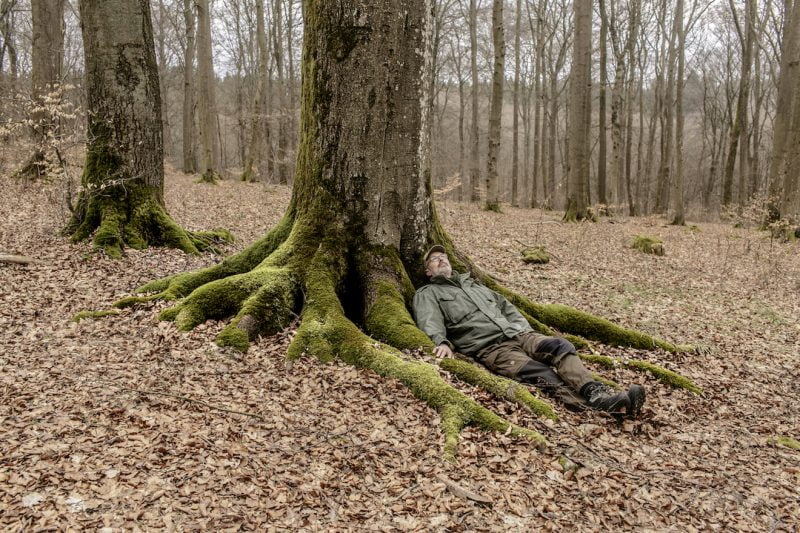
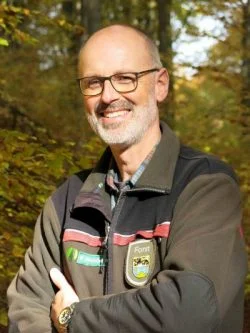
It is important to note that although Suzanne Simard thought that her initial discovery three decades ago would lead to a breakthrough, and to changes in forestry practices and management, as she has frequently noted, to her surprise the forestry industry has yet to catch up with the science.[6]
For some time now, there has been a persistent and growing call among nature writers for humans to re-assess our contract with nature. The looming emergencies are the hubris of humankind’s growing numbers and technological hegemony over nature. The state of the planet, and in this instance, of our forests, reflects the dismal state of our relationship with nature. There is a yawning gap between treating nature as our larder that we can raid, and our appreciation of its complexity as a superorganism with which we not only share a planet but depend on as the planet’s lungs to absorb our carbon pollution. The forest, which we take for granted and destroy at an increasingly alarming rate, provides the oxygen that fuels the biosphere of which we are but one small part. There is a phrase that one finds repeated in the writings of contemporary biologists as diverse as David Attenborough,[7] Daniel Pauly,[8] and Monica Gagliano. Each one points out in his or her writings and lectures that the most urgent thing we can do to address the twin climate and biodiversity emergencies that threaten mankind’s future is to “re-acquaint man with nature.”
This is in fact exactly what Wohlleben endeavours to do in his many books that present the findings of modern biology and ecology with the bonhomie of an easy narrative style. This illustrated edition and translation of Das geheime Leben der Baume (2015), was ably translated by Jane Billinghurst in 2016. This is unfortunately an abridged version that contains no bibliographical footnotes to guide the reader back to Wohlleben’s scientific sources. This is one of several regrettable omissions in the abridged version. Notably absent is the subtitle of the English edition: The Hidden Life of Trees: What they Feel, How They Communicate, Discoveries from a Secret World. This set of essays is not just an armchair walk through the forest, as the gorgeous illustrations might mislead one to believe. It is actually an introduction to the scientific basis for the recognition of the forest as a sentient superorganism.
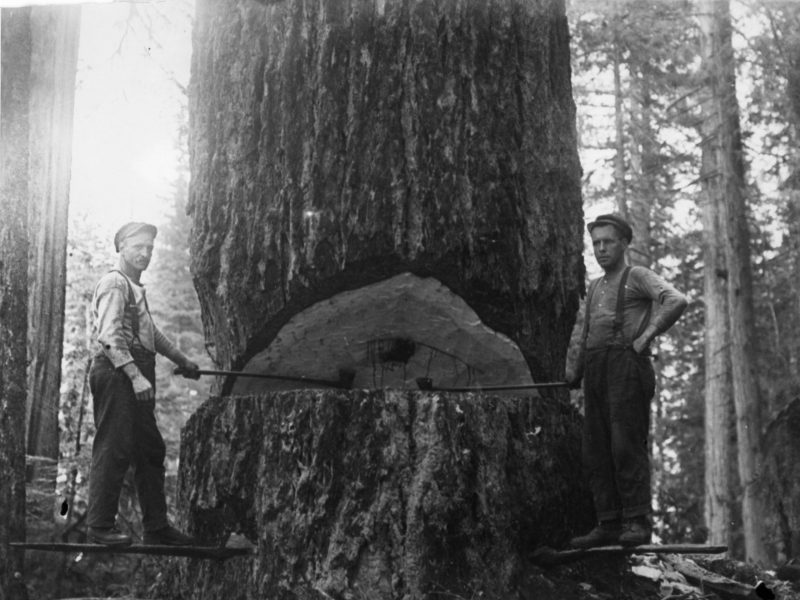

The thesis that Wohlelben puts forward is not without controversy. Outraged German industrial foresters and hunters whose privileges Wohlleben sometimes impugns have even issued a righteous petition to have his books banned![9] Ironically, what they claim to be “unenlightened thinking” is in fact very much a product of the Enlightenment — of von Humboldt’s German Enlightenment at that! However, while the wonderful lush photography in this abridged version may undoubtedly appeal to the readers’ aesthetic sensibility, a lack of good footnotes and references diminishes the ability to convey to the reader that Wohlleben’s anecdotes are rooted in hard empirical science.
How important it is to understand that Wohlleben’s narrative is based on empirical science is borne out by two aspects of the book. First, there is a long line of homonymous previously published books. Many of these, such as the infamous The Secret Life of Plants by Peter Tompkins and Christopher Bird, have speculated on the “hidden language” of plants. Many such books are based on the New Age mysticism of the Findhorn Foundation kind.
Second, while the ideas and concepts presented by Wohlleben are gaining credibility and slowly becoming mainstream within the community of biologists and botanists, there remains a sceptical utilitarian core of resistance to these ideas and what they imply among a minority of academic botanists and a majority of industry biologists and foresters. That resistance came to the fore this spring (2019) with the publication of an opinion piece entitled “Plants neither possess nor require consciousness” by a group of botanists led by Dr. Lincoln Taiz of the University of California at Santa Cruz. This public letter calls for a wholesale rejection of “plant neurobiology.” Taiz et al. base their case on the zoological research of Todd Feiberg and John Mallat on the evolution of consciousness of animals, and the evolution of the brain.[10] In their view, “plant neurobiologists have failed to consider the importance of brain organisation, complexity and specialisation for the phenomenon of consciousness.”[11]
This claim is reminiscent of Descartes’ grounds for inferring that animals could neither reason nor feel pain. He couldn’t find a human soul in a dog. Taiz et al. can’t find a walnut-sized organ in a plant. It is not unlike claiming that women are incapable of rational thought because they do not have testicles (how testicles ever endowed men — or dogs — with reason remains a profound source of mystery to this reviewer, Cervantes notwithstanding).[12] Gagliano and others roundly reject Taiz et al.’s objections on the simple grounds that plant neurobiologists have amassed a mountain of empirical evidence of consciousness, feeling, kin recognition, and intentionality in plants based on objective tests which have since been replicated many times. Taiz et al.’s objection is based on a specious requirement and presents no empirical evidence that plants do not exhibit consciousness. In fact, plant consciousness was first hypothesized by Darwin in his second-to-last book, The Power of Movement in Plants (1880). Darwin deduced that the neural organ of plants lies in the root tips:
It is hardly an exaggeration to say that the tip of the radicle thus endowed [with sensitivity] and having the power of directing the movements of the adjoining parts, acts like the brain of one of the lower animals; the brain being seated within the anterior end of the body, receiving impressions from the sense-organs, and directing the several movements.[13]
This point, which has long been known to botanists and plant neurobiologists,[14] has been tacitly overlooked by mainstream science because it is inconsistent with our exploitive industrial ethos.
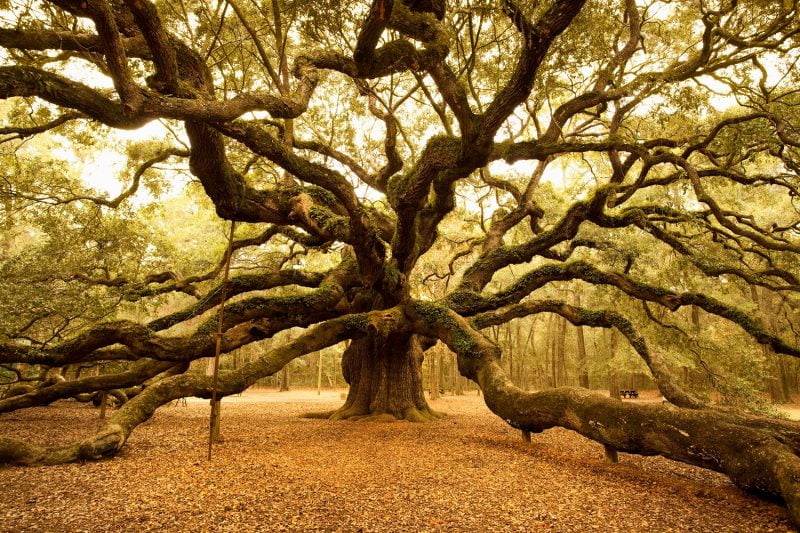
Darwin’s succinct statement really marks an important watershed moment in the history of modern science. In recognizing that plants have a cognitive capacity, Darwin demonstrates that he remained throughout his life profoundly indebted to the influence of the father of geology, John Hutton (1726-1797), and to Alexander von Humboldt (1769-1859), both of whom saw the planet and nature as “superorganisms.” Contrary to what some historians have suggested, Darwin’s publication of On the Origin the Species was not an expression of allegiance to a mechanistic materialism, rather it was a levelling expression of man’s place in nature as an animal, as one of the organisms that contributes to the superorganism. The materialism that sidelines von Humboldt’s grand vision of a highly interconnected living whole, and reduces Darwinism to a reductionist mechanistic theory, really only comes with Darwin’s successors and principal interpreters Herbert Spencer (1820-1903) and Thomas Huxley (1825-1895). The latter became the guiding lights of what an increasing number of biologists and anthropologists across America increasingly refer to as the “colonialist scientific project.”
Increasingly, many ecologists like to think that we have entered a post-colonial era of science. Biologists and ecologists have come to recognize the importance and value of local and First Nations knowledge and respect for the land. This tendency signals a growing return to von Humboldt’s broader and more complex approach to science, as noted recently in a major editorial in Science.[15] Humboldt’s vision of a living world as a superorganism in which everything is connected was consistent with the Indigenous knowledge he encountered in his travels in South America. Von Humboldt, like many of his successors, did not hesitate to note that aboriginal people were “great geographers and botanists,” and that there was much to be learned from them.[16] The “broken” and collapsing state of our ecosystems after a short century of industrial mismanagement bears witness to the validity of that vision.[17]
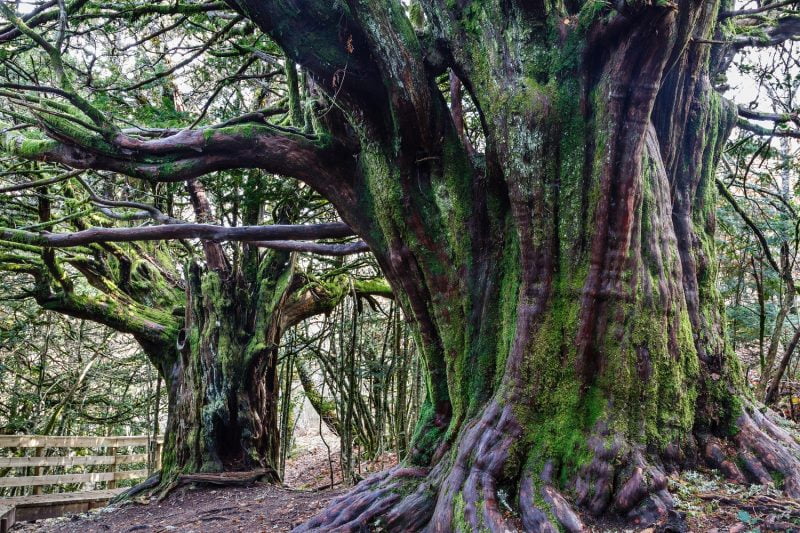
The premise of this book is one that John Muir would have cherished: “forests are superorganisms with interconnections much like ant colonies.”[18] In resurrecting this thesis, Wohlleben re-acquaints the reader with the sentient universe that underlies the much of the history of the Earth Sciences from John Hutton to Alexander von Humboldt, Frederic Clement and James Lovelock. In that line of science evolution is indeed driven by Darwinian competition and natural selection, but nature is also preserved by community mutualisms and social cooperation. This is an inconvenient premise for a culture of individualism that views the rest of nature, and often large sectors of humankind, as a disposable commodity of market resources.
Indeed, as a result of the growth of the twin ideologies of industrialization and colonial capitalism, a dysfunctional “mankind” has not treated nature with either the respect nor the kindness it is owed. It has felt no bond to the genetic kinship that Darwin and Mendel discovered. If we trust the United Nations 2019 sixth Global Outlook Report on the state of the planet, “the environment is a deadly mess.”[19] This conclusion bears out, as never before, the tragic social and environmental magnitude of the missed cultural opportunity in the 1972 4-3 Supreme Court decision in Sierra Club vs.Morton (405 U.S. 727 (1972). Justice W.O. Douglas’ famous dissenting opinion followed the reasoning of Christopher Stone’s now classic legal essay: “Should Trees Have Standing?”[20] Douglas opined that in response to ecological concerns, “inanimate” environmental objects such as forests, valleys, rivers, and alpine meadows should be granted “legal personhood.” His reasoning is worth quoting with almost 50 years’ hindsight:
Inanimate objects are sometimes parties in litigation. A ship has a legal personality, a fiction found useful for maritime purposes. The corporation sole — a creature of ecclesiastical law — is an acceptable adversary and large fortunes ride on its cases…. So it should be as respects valleys, alpine meadows, rivers, lakes, estuaries, beaches, ridges, groves of trees, swampland, or even air that feels the destructive pressures of modern technology and modern life. The river, for example, is the living symbol of all the life it sustains or nourishes — fish, aquatic insects, water ouzels, otter, fisher, deer, elk, bear, and all other animals, including man, who are dependent on it or who enjoy it for its sight, its sound, or its life. The river as plaintiff speaks for the ecological unit of life that is part of it.
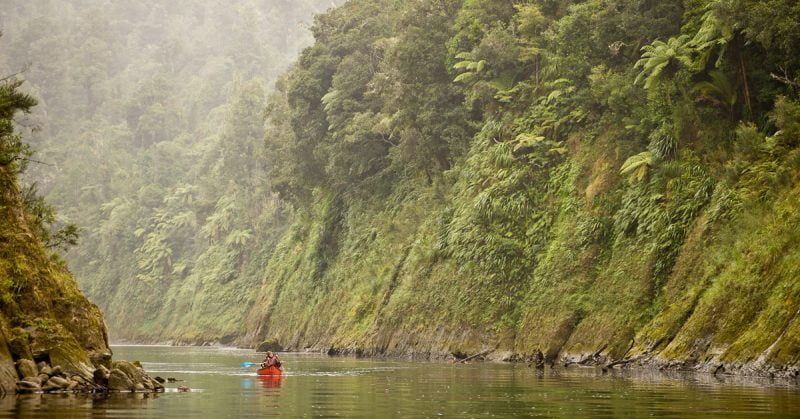
In March 2017, some 45 years after Douglas’s minority opinion, New Zealand formally recognized the legal personhood of rivers, following a declaration that began in 2012. This was followed by the recognition of the Te Uwerera Forest as a person in 2014.[21] New Zealand also formally recognized the Te Awa Tupua (Whanganui River) as a person. In so doing New Zealand assimilated into its legal system the Maori concept that the personhood of rivers and forests is “an ancestor,” and harm done to the river is harm to the tribe and its elders.[22] The recognition of the “rights of Nature,” and therefore of the personhood of nature, has since been growing around the world, together with the recognition of Indigenous rights and the value of Indigenous cultures. The latest formal recognition is the formalization of the legal rights of Lake Erie by Ohio voters to protect water quality.[23] It is important to note that the recognition of the personhood of nature is an inherent part of Western science, as evident in the tradition of von Humboldt. The spirit of UNDRIP is therefore not simply a reconciliation of two cultures, but a reconnection with an important strand of our culture.
Wohlleben presents a coordinated set of arguments that consolidate the research of plant behaviourists since 1983. These findings go beyond Douglas’s legal consideration of trees as “inanimate objects.” Wohlleben lays out the arguments for the consideration of forests as an animate or sentient organism. He sets out the framework for personhood within the constraints of empirical Western science, which vindicates Indigenous cultural knowledge and the United Nations Declaration on the Rights of Indigenous People.[24]
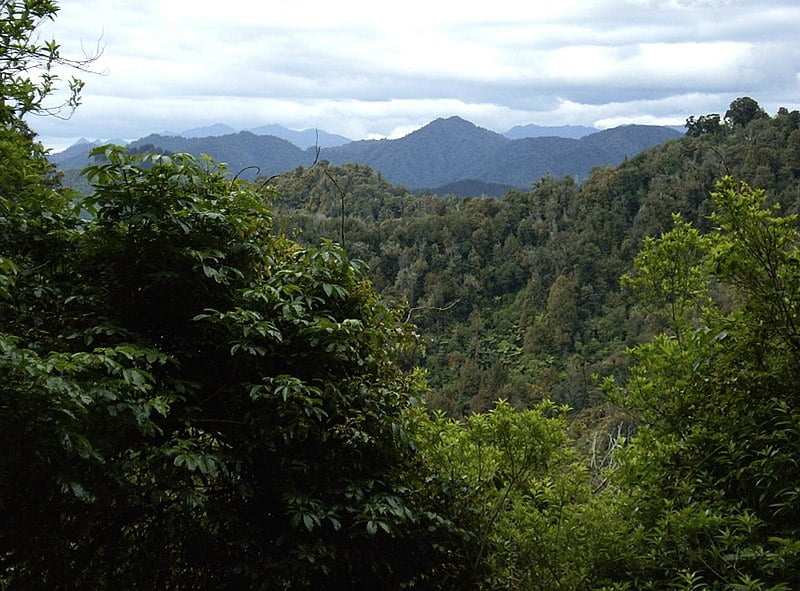
While Wohlleben’s arguments may surprise some readers, they are not inherently new to the history of Western science. What is new is that the concepts he presents are empirically tested and that they represent the modern renewal of an ancient understanding that all things are connected and interact as a community. The problem lies in understanding the strain of scientific ideology that is being endorsed. Nature cannot be managed sustainably if it continues to be treated as a collection of separate entities, such as has characterized the “resource management” approach endorsed when Theodore Roosevelt adopted the utilitarian ideology of Gifford Pinchot, and tacitly rejected John Muir’s environmental advocacy for the Hetch-Hetchy valley.[25]
Wohlleben begins his case by presenting the now well-studied phenomenon of “living stumps.” These are remains of trees which were either blown down or cut down over a hundred year ago, but which continue to live without being able to put out leaves with which to photosynthesize. They therefore depend on the photosynthesis of other trees. These individuals continue to have living meristematic cambium cells in their roots or transition zones, because of the nutrients and photosynthate that they receive from other members who are usually close genetic relatives of the forest community. These individuals can be kept alive for the lifetime of the forest, as long as those connections are maintained. These stumps, which were presumed to be dead, have been of particular interest in conservation projects concerned with the restoration of endangered and ancient woodland species such as the kauri forests of New Zealand[26] and the redwood forests of California.[27] This phenomenon demonstrates that the forest is a social network of individuals who are in constant communication both underground by association with the mycorrhizal networks and areally through the release of terpenes and other aereosols, as well as through infrasounds, much like elephants!
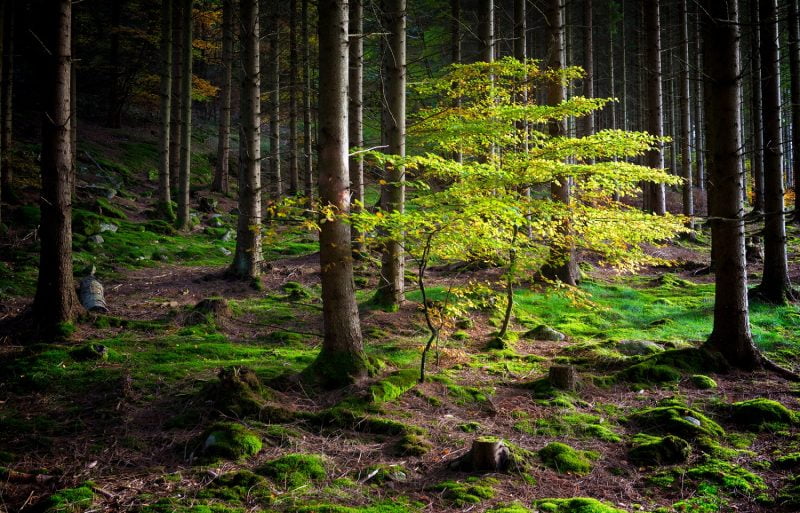
Like elephants, trees depend on matriarchal guidance and nurture. As demonstrated by Simard, the forest depends on mother trees to direct community nutrients in time of stress to nearest genetic kin. In death, mother trees pass on a wealth of nutrients and stored memory of phytochemicals to their kin. As with other species that have lost matriarchal knowledge, such as mountain goats, wolf packs, or elephants, that knowledge cannot easily be regained and the species become more vulnerable. Forests devoid of mother trees such as industrial monocultures, or “working forests,” have lost the ancient memory inherent in DNA of past climate variations, and insect and pathogen outbreaks, and face an impoverished future.
Among the astounding contributions is Monica Galiano’s discovery that individual plants do not simply respond to stimuli, they are capable of assessing their environment and making decisions.[28] In so doing, plants, trees, and entire forests are not passive residents of a geography. They are the architects of their environment. They interact with fauna and control it through the release of phytochemicals either as repellants or attractants. The entire field of “Shinrin-Yoku,” or Japanese Forest-Bathing, bears witness to the phytochemical impact of forests on human physiology and psychology.[29]
These responses are not haphazard. As Wohlleben notes (p. 24), while forest topography and underlying geology may vary and different individuals may grow at varying rates, nutrient exchange is optimally divided among all trees due to their relation with fungi. Individual trees do not photosynthesize at individual rates. Photosynthesis is not the activity of one tree. It is the cooperative community activity of the forest organism. All trees photosynthesize at the same rate throughout the forest, just as tree species mast and seed in unison within each forest.

In the mass release of phytochemicals such as terpenes, forests are to a certain degree capable of regulating regional rainfall and climate, since terpenes form cloud and rain nuclei.[30] Forests therefore play an important role in climate regulation and also, as a result, in the chemistry of lakes and oceans. As Wohlleben reminds us at the end of this book, by referring to the important work of the Japanese biochemist Katsuhiko Matsunaga, forests regulate the concentrations of humic acids which sustain both phytoplankton and kelp forests in coastal oceans. Many people frequently forget that salts in the ocean come from terrestrial erosion. Similarly, 85% of humic acids in coastal oceans, which chemists consider to be “poly-salts,” come from terrestrial run-off. Iron uptake in chloroplasts requires a biological carrier. These poly-salts are the biogenic carriers of iron in chloroplasts. Without humic acids there can be no iron and no photosynthesis, in short no plankton, sea wrack, or kelp. As we see coastal BC kelp forests dwindle, and with them the disappearance of keystone herring and the entire “broken ecosystem” of the millennial food chains of the Salish Sea, we are reminded of the great unity of forest and ocean ecosystems.[31] The removal of entire old-growth terrestrial forests, such as we have been witnessing in BC for many decades, can therefore have large adverse regional scale impacts on the millennial old-growth marine kelp forests.

Wohlleben’s Hidden Life of Trees is a timely book by an industrially-trained forester who has “seen the light” and now advocates for a different, more caring, kind of forestry. It is, together with the United Nations report, a timely call for “transformational changes.” Wohlleben provides basic environmental literacy for the twenty-first century.
This book would bring an enthusiastic smile with characteristic laughing eyes to my late trailblazing friend, ecoforester Merv Wilkinson of Wildwood at Yellow Point, Ladysmith. For decades now it has been very clear that mankind needs to review its contract with nature. Understanding the forest, and modern forestry research, is an essential transformative first step.
*

A graduate of the universities of St. Andrews, UBC, and Saskatchewan, Dr. Loys Maingon first taught environmental studies in 1986. An avid naturalist and a registered professional biologist, he is past president of the Comox Valley Naturalists and current webinar host for the Canadian Society of Environmental Biologists. From his home on the Tsolum River near Merville, he owns and operates an endangered plant nursery and oversees a number of regional conservation and heritage programmes. He is also Research Director of the Strathcona Wilderness Institute and does environmental consulting. Arrested at Clayoquot Sound in 1993, Loys remains a strong advocate for social, economic, and environmental change. He contributed a chapter to Clayoquot & Dissent (Ronsdale Press: 1994).
*
The Ormsby Review. More Books. More Reviews. More Often.
Publisher and Editor: Richard Mackie
The Ormsby Review is a journal service for serious coverage of B.C. books and authors, hosted by Simon Fraser University. The Advisory Board consists of Jean Barman, Robin Fisher, Cole Harris, Wade Davis, Hugh Johnston, Patricia Roy, David Stouck, and Graeme Wynn. Scholarly Patron: SFU Graduate Liberal Studies. Honorary Patron: Yosef Wosk. Provincial Government Patron since September 2018: Creative BC
“Only connect.” – E.M. Forster
Endnotes:
[1] John Muir (1938). John of the Mountains: The unpublished Journals of John Muir. (ed. Linnie Marsh Wolfe) The University of Wisconsin Press. p. 429.
[2] https://thenarwhal.ca/indicative-of-a-truly-corrupt-system-government-investigation-reveals-bc-timber-sales-violating-old-growth-logging-rules/
[3] David F. Rhoades (1983). “Response of Alder and Willow to Attack by Tent Caterpillars and Webworms: Evidence of Pheromonal Sensitivity of Willows” in Pant Resistance to Insects. ed. Hedin, P. American Chemical Society, 55-68.
[4] See: https://www.springer.com/us/book/9783540284758
[5] https://www.researchgate.net/profile/Monica_Gagliano; (2018) Thus Spoke the Plant. Berkeley: North Atlantic Books. 162 pages.
[6] https://www.youtube.com/watch?v=Un2yBgIAxYs ; https://www.youtube.com/watch?v=dRSPy3ZwpBk
[7] https://www.theguardian.com/environment/2018/dec/03/david-attenborough-collapse-civilisation-on-horizon-un-climate-summit
[8] Daniel Pauly (2019). Vanishing Fish: Shifting Baselines and the Future of Global Fisheries. Greystone
[9] https://www.openpetition.de/petition/online/even-in-the-forest-its-facts-we-want-instead-of-fairy-tales
[10] https://www.cell.com/trends/plant-science/fulltext/S1360-1385(19)30126-8
[11] https://www.theguardian.com/science/2019/jul/03/group-of-biologists-tries-to-bury-the-idea-that-plants-are-conscious
[12] Cervantes endowed dogs with reason in a condemnation of human hypocrisy entitled “El Dialogo de los Perros,” possibly one of his greatest works after “El Quixote.”
[13] Darwin CR. The Power of Movements in Plants. London: John Murray,; 1880. ( http://darwin-online.org.uk/)
[14] František Baluška Stefano Mancuso, Dieter Volkmann, and Peter W Barlow. (2009) “The ‘root-brain’ hypothesis of Charles and Francis Darwin Revival after more than 125 years Plant Signalling and Behaviour 4(12): 1121–1127. https://www.ncbi.nlm.nih.gov/pmc/articles/PMC2819436/
[15] “A Humboldtian View of the Mountains” https://science.sciencemag.org/content/365/6458/1061.full
[16] Andrea Wulf (2015). The Invention of Nature: Alexander von Humboldt’s New World. Vintage, p. 80.
[17] Loys Maingon (2019). Narrowing Choices in an Ecological Collapse. Bulletin of the Canadian Society of Environmental Biologists.76:7-11. ; https://vancouversun.com/news/staff-blogs/health-of-fishery-based-on-assessment-of-a-broken-ecosystem-sfu-study-finds
[18] The Hidden Life of Trees (p. 8)
[19] https://www.cbc.ca/news/technology/un-environment-outlook-1.5054243
[20] Stone, Christopher D. 1972. “Should Trees have Standing? Toward Legal Rights for Natural Objects,” Southern California Law Review: 450.
[21] https://www.cbc.ca/news/technology/un-environment-outlook-1.5054243
[22] https://www.theguardian.com/world/2017/mar/16/new-zealand-river-granted-same-legal-rights-as-human-being
[23] https://www.vox.com/future-perfect/2019/2/26/18241904/lake-erie-legal-rights-personhood-nature-environment-toledo-ohio
[24] https://www.un.org/esa/socdev/unpfii/documents/DRIPS_en.pdf
[25] https://hetchhetchyvalleyhd.weebly.com/the-debate.html
[26] https://www.nytimes.com/2019/07/25/science/tree-stump-alive.html
[27] https://e360.yale.edu/digest/arborists-have-cloned-ancient-redwoods-from-their-massive-stumps
[28] https://www.researchgate.net/profile/Monica_Gagliano; (2018) Thus Spoke the Plant. Berkeley: North Atlantic Books. 162 pages.
[29] Quing Li (2018) Forest Bathing: How Trees Can Help You Find Health and Happiness. New York:Viking, 310 pages.
[30] https://www.theguardian.com/environment/2008/oct/31/forests-climatechange
[31] https://vancouversun.com/news/staff-blogs/health-of-fishery-based-on-assessment-of-a-broken-ecosystem-sfu-study-finds
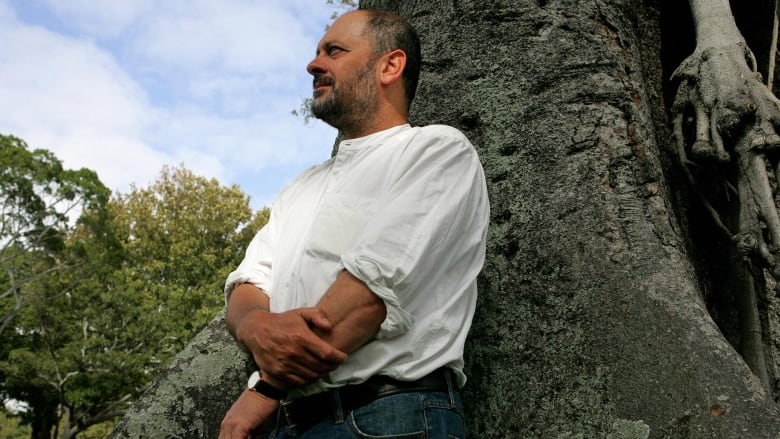
4 comments on “#682 Nature as superorganism”
I came upon this review recently, while preparing a related review of my own, and was struck in particular by the claim that Darwin was a believer in a root-based “neural organ” and that he “recogniz[ed] that plants have a cognitive capacity.” This is proved, we are told, by the final paragraph in his book The Power of Movement in Plants (1880). My scepticism (given this assertion didn’t sound like Darwin except metaphorically) led me to the source. Here we read some stridently contrary views from that of Loys Maingon:
“ Why a touch, slight pressure or any other irritant, such as electricity, heat, or the absorption of animal matter, should modify the turgescence of the affected cells in such a manner as to cause movement, we do not know. […] it is impossible not to be struck with the resemblance between the foregoing movements of plants and many of the actions performed unconsciously by the lower animals. […] The habit of moving at certain periods is inherited both by plants and animals; and several other points of similitude have been specified. But the most striking resemblance is the localisation of their sensitiveness, and the transmission of an influence from the excited part to another which consequently moves. Yet plants do not of course possess nerves or a central nervous system; and we may infer that with animals such structures serve only for the more perfect transmission of impressions, and for the more complete intercommunication of the several parts.”
Further evidence that checking excerpts against the original source continues to be a good idea.